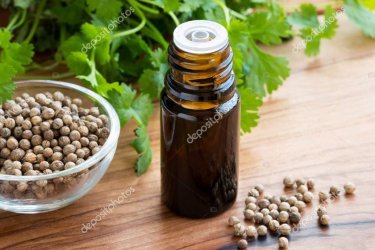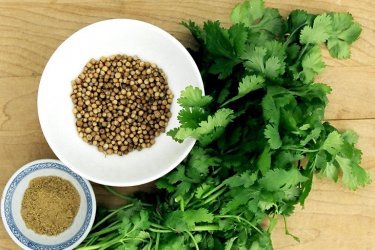Cilantro
Coriander, or cilantro, is a plant known since ancient times. It has always been appreciated for its original aroma.
The ancient Greeks and Romans used it as a valuable medicinal drug. Nowadays, cilantro is grown as an essential oil crop.
About beneficial properties
Cilantro greens are highly valued by culinary experts; in addition to their original aroma, they contain a large amount of carotene, rutin and vitamins.
ethnoscience recommends using coriander:
- in the treatment of wounds,
- in the treatment of colds, in particular cough,
- if necessary, improve the digestive process,
- to combat vitamin deficiency,
- to give freshness to your breath.
The pharmaceutical industry produces antihemorrhoids and laxatives based on coriander products.
Growing cilantro
The plant belongs to the celery family, it is an annual, resistant to cold.
Seeds begin to germinate at soil temperature + 6 C; they are sown at the beginning of spring. It is also possible to plant cilantro before winter, even if the seedlings appear earlier than planned, they will be able to withstand frosts within - 10 C.
If we talk about how many days it takes for cilantro to sprout, then it’s not easy to give a definite answer; if the seeds are sown at the very beginning of spring, the shoots will appear in about 40 days; if sown later in warm soil, the sprouts will appear on the 20th day, but they themselves will weaker.
The formation of stems begins 3-4 weeks after germination; after 3 weeks after flowering, the first fruits will appear.
Gardeners often wonder how long cilantro grows.The duration of the growing season is influenced by the growing temperature and compliance with agricultural cultivation techniques coriander On average, the life cycle of a plant requires about 110-115 days.
Growing cilantro in a greenhouse and in the garden
The optimal temperature for plant development is within + 22 C. It loves moist soil and air, well-lit plots.
The soil must be fertile; when applying fertilizers, attention should be paid to those containing nitrogen and phosphorus.
During the development of the plant you will need:
- systematic loosening of the soil,
- weed removal,
- crop thinning,
- abundant watering during the flowering period,
- periodic feeding with nitroammophos or superphosphate.
You can harvest aromatic greens several times a season; they are used to prepare first and second courses, and they are an essential component in recipes for pickling and fermenting vegetables.
Given the great demand for aromatic greens, enterprising gardeners may want to think about the advisability of growing cilantro for sale.
With relatively low financial and labor costs, you can get good revenue from selling greens.
Harvesting seeds
Technical ripeness of seeds occurs when they acquire a brown color. Carefully cut stems with seeds are cut, tied into bunches and dried in the attic or under a shed, with a clean cloth spread under them.
After complete drying, the seeds are threshed and winnowed. 1 square meter of area can produce about 150 g of seeds. Store them in glass containers in a dark, dry cabinet.
Used as seed material, as well as in preparing spicy salted herring and pickling vegetables.



